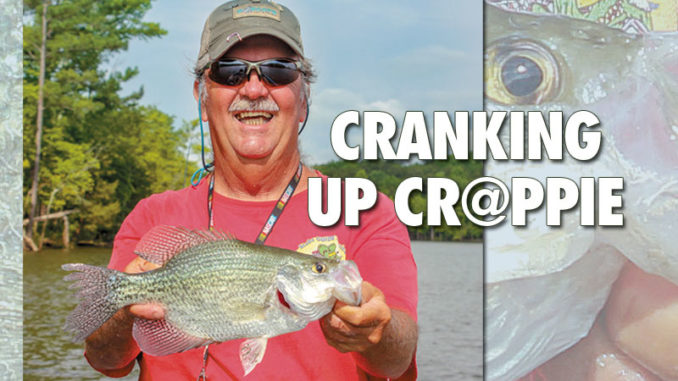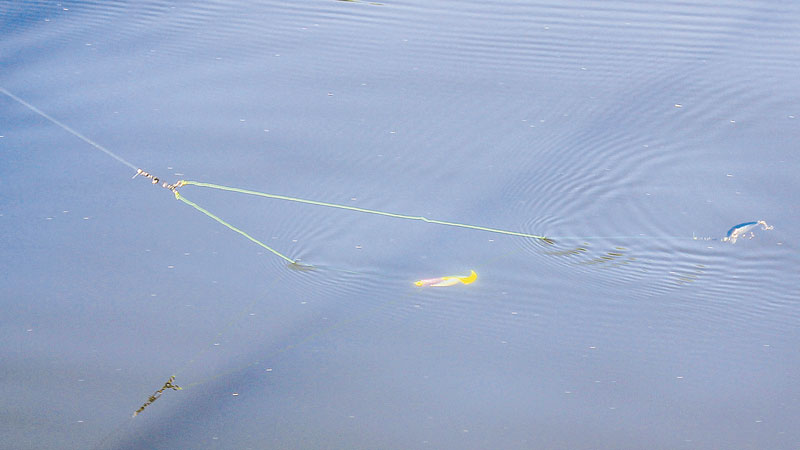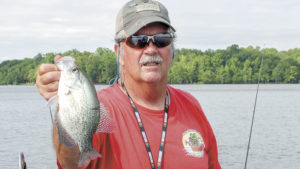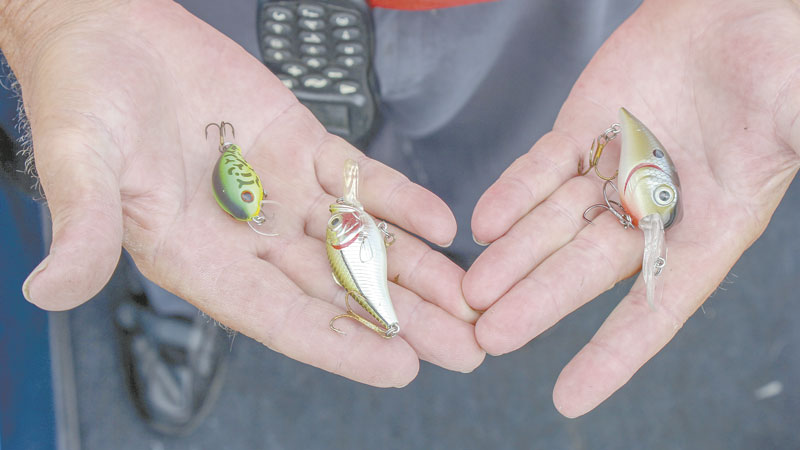
When slabs reach their summer haunts in deeper water, if often takes a vibrating, rattling crankbait to draw a strike. Here’s how to get one.
There’s a good reason why more anglers aren’t catching crappie on crankbaits: they haven’t tried yet.
Although crappie are often viewed as a fish that needs to be finessed with tiny jigs or minnows, they’ll eat anything they can fit in their mouths, and the sweltering summer temperatures that can make them lose their appetites leaves them wide open to the reaction strike that a crappie-sized crankbait triggers.
Eddie Moody, a long-time crappie-fishing guide, knows this first-hand. Moody, who prefers long-line trolling to tight-lining or pitching individual baits, believes the vibration and rattle of crankbaits are superior for drawing a reaction strike compared to typical jigs and minnows.
“It’s like having a dog that you’ve raised from a puppy,” said Moody, “and you sneak up and startle him. His first reaction is to snap, no matter how long he’s known you; it’s Mother Nature’s way.

“Crankbaits are better in the summer for reaction strikes, because you can get the bait down where you want (it) at a higher speed. With a jig, you have to slow down to make it drop. You get above a mile an hour pulling cranks, and they don’t have time to stop and think — they react.”
Not only does trolling crankbaits draw more strikes, higher speeds give an angler an opportunity to cover more ground.
“You can put in an 8-hour trip in 4 hours,” Moody said. “I usually troll between 1 mile per hour and 1.5. If it clouds up, I’ll back off the speed for 15 minutes or so and let the baits rise. But I never go under 0.8 with cranks because they won’t have any action. The sun changes trajectory so fast this time of year that it’s hard to get a stable bite at the same depth for more than an hour.”
Moody regards a cloudy day as a troller’s paradise because the fish will suspend higher in the water column and will be more active. Also, they will be scattered throughout an area instead of hugging tight to brush. But this changes quickly with fluctuating light and water temperatures, and Moody will speed up and slow on a bright, sunny day, according to the fish he marks on his sonar. He would rather have his lures 2 feet above the fish than 6 inches below.
Different depths
To combat the changes in target depths, Moody covers the water column with crankbaits that dive at different depths, and he sprinkles in a couple of Roadrunners for good measure, using a No. 12 snap swivel on the crankbaits for a quick switch-out if a depth becomes hot.
“My crankbaits run from 4 to 12 feet deep,” said Moody, “maybe 16 if it’s hot and extra bright. That’s running 2-inch, 3-inch, 3½- and 4-inch baits on the deeper end. I’m usually doing this with a 10-rod spread: six straight crankbaits, two three-way rigs with a jig running in conjunction, and two 1/16-ounce Roadrunners.”

To cover a wide swath of water, Moody runs a 12-foot rod straight out from both gunwales on either side of the transom, like outriggers. A rod holder mounted on the transom holds 4 more rods: two 6½-foot rods that angle out slightly and two 10-foot rods that angle up on either side of the motor. Two rods will run off either side, typically an 8-footer in front and a 5-footer behind. The deepest baits will run off the bow to act as curb feelers, signaling the bottom bouncing that encourages Moody to slow down. Baits running off the stern should be 60 to 80 feet behind the boat, giving fish a chance to settle down after the trolling motor buzzes over their heads. Moody prefers to place shallow-running baits next to deeper-running baits to prevent tangling.
“I don’t use any particular colors,” Moody said, “but I like something with a little flash, usually the ones I find in the bargain bin at Walmart. Fire tiger, a crawfish pattern or blue are all good choices. I put out a variety and let the fish tell me what they want. It’s strange to see the same bait being hit by color, but you will see them favor a bait by the depth it’s running.”
Locations
Crappie are most likely main-lake residents in August, but Moody still finds success trolling inside the mouths of some of the deeper creeks in addition to main-lake points and pockets. Red-clay banks on the shoreline are a good sign.
Generally, he targets water from 16 to 25 feet deep, but crappie will be suspended from 4 to 6 feet under the surface down to the thermocline, starting out on the shallow end of the spectrum in the morning and progressing deeper throughout the day.

Moody makes certain to pass over any of the 2,500 brush piles he has marked that come near his trolling routes. Crappie often hover over the top of the brush, and the brighter the day, the closer they will be to the brush. As he passes over, he takes careful note of the height of the cover and the running depth of his crankbaits. If necessary, he eases off the trolling speed to guide the plugs safely over.
Make crappie do a double-take
According to guide Eddie Moody, a difference in depth of a few inches can have a big impact in crappie fishing, and giving the fish something they’re not used to seeing can be the difference in getting bit or not.
Those are two reasons why Moody experimented with putting out a few extra baits in his crankbait trolling spread — but not on separate rods. He introduced a No. 6, three-way swivel to his rigs and enhanced his crankbait bite.
It all goes back to Moody’s dog analogy. Startle a resting dog, and he’s liable to bite, but if two people sneak up on him, he might get really excited. To a three-way swivel, Moody ties a leader about 24 inches long that goes to a crankbait, and he adds another 18-inch section of leader tied to a jig or Roadrunner-type lure.
The crankbait pulls the rig down to its running depth, and the jig flutters below it. Not only does the added bait offer more presence, but it allows for changing the running depth and covering a tiny differences in depth between the other baits.
“You can use the jig to fine-tune a crankbait,” said Moody. “The more or less weight you use, the deeper or shallower it will run. I can also tie a longer leader on one of the jigs, and it’ll run that much deeper. That can make a big difference sometimes. Plus, it’ll tame-down some of the cheaper crankbaits that I use. It takes out the erratic wobble and make it run true.
“Sometimes, I’ll use a straight jig and a curlytail grub and sometimes a Roadrunner, trying to hit all the variations I can, but usually sticking with a 1/16- or 1/8-ounce head. If the fish want to change up depths or baits, I want to have something for them.”


